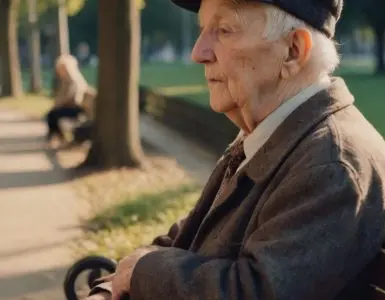¿Te has preguntado alguna vez por qué tomas las decisiones que tomas? ¿Por qué reaccionas como lo haces ante determinadas situaciones? A todos nos gusta pensar que somos seres racionales, que tomamos decisiones conscientes basadas en la lógica y la razón. Pero la verdad es que nuestros cerebros son pequeños seres astutos, llenos de atajos y prejuicios que a menudo guían nuestras acciones sin que nos demos cuenta. Veamos algunas ideas fascinantes sobre los patrones ocultos que guían el pensamiento, los sentimientos y las acciones humanas.
El poder del cebado
Imagínese que entra en una tienda de comestibles. Sutilmente, la música es alegre, la iluminación brillante y el olor a pan recién horneado flota en el aire. Lo que quizá no sepas es que te están preparando. Estas señales ambientales influyen sutilmente en tu estado de ánimo y tu comportamiento, y pueden llevarte a gastar más dinero o a elegir determinados artículos. Los experimentos han demostrado que incluso detalles aparentemente insignificantes, como el color de una pared o la música de fondo, pueden influir en todo, desde nuestras decisiones de compra hasta nuestros juicios sobre otras personas. Este es el poder de la imprimación: activar determinadas asociaciones en nuestra mente sin que seamos conscientes de ello.
El efecto camaleón
¿Te has dado cuenta de que a veces imitas inconscientemente el lenguaje corporal de alguien con quien hablas? Es el efecto camaleón, un fenómeno fascinante en el que reflejamos automáticamente las posturas, expresiones y gestos de quienes nos rodean. Es una forma subconsciente de crear compenetración y conexión. Los estudios han demostrado que las personas que más se reflejan en los demás también resultan más simpáticas. La próxima vez que mantengas una conversación, presta atención: quizá te sorprenda lo mucho que reflejas a la persona con la que estás. ¿Cómo afecta la música al cerebro?
Disonancia cognitiva: Cuando las creencias chocan
Todos nos esforzamos por ser coherentes en nuestros pensamientos y acciones. Pero, ¿qué ocurre cuando nuestras creencias chocan con nuestros comportamientos? Aquí es donde entra en juego la disonancia cognitiva. Imaginemos a alguien que cree firmemente en el ecologismo pero conduce con frecuencia un todoterreno que consume mucha gasolina. Para reducir el malestar que le causa esta incoherencia, puede restar importancia al impacto ambiental de su coche, racionalizar sus acciones o incluso cambiar por completo sus creencias sobre el ecologismo. Esta gimnasia mental es la forma que tiene nuestro cerebro de mantener una sensación de armonía interna.
El efecto espectador: Difusión de la responsabilidad
El infame caso de Kitty Genovese puso de relieve un fenómeno escalofriante: el efecto espectador. Cuando varias personas presencian una emergencia, la responsabilidad de actuar parece difuminarse entre ellas. Cada persona asume que otra intervendrá, lo que provoca que nadie ayude realmente. Los experimentos han demostrado sistemáticamente este efecto. Cuantas más personas estén presentes, menos probable es que actúen. Esto no significa que la gente sea intrínsecamente cruel, sino que se trata de una compleja interacción entre la dinámica social y nuestro instinto de evitar posibles conflictos o situaciones embarazosas.
Sesgo de confirmación: ver lo que queremos ver
Todos tendemos a buscar información que confirme nuestras creencias y a ignorar la que las contradice. Esto es el sesgo de confirmación, y puede influir significativamente en nuestra toma de decisiones. Piense en debates políticos o discusiones sobre temas controvertidos. La gente suele centrarse selectivamente en las pruebas que apoyan sus puntos de vista preexistentes, lo que dificulta llegar a un consenso o considerar perspectivas alternativas. Internet, con su abundancia de información (y desinformación), no ha hecho más que amplificar este efecto.
El efecto Halo: Las primeras impresiones importan
Nuestra percepción inicial de una persona puede influir significativamente en nuestros juicios posteriores. El efecto halo describe la tendencia a dejar que un rasgo positivo (por ejemplo, el atractivo) tiña nuestra impresión general, incluso afectando a características no relacionadas. Si alguien nos parece físicamente atractivo, podemos suponer inconscientemente que también es inteligente, amable o competente. Por el contrario, una primera impresión negativa puede provocar el "efecto cuerno", en el que un único rasgo negativo eclipsa a todos los demás. Esto no siempre es malo; es un atajo cognitivo eficaz, pero es importante ser consciente de sus posibles sesgos.
Aversión a la pérdida: El dolor de perder
Sentimos más el dolor de una pérdida que el placer de una ganancia equivalente. Es la aversión a la pérdida, un principio fundamental de la economía del comportamiento. Imagínese elegir entre una ganancia segura de $50 o una probabilidad de 50% de ganar $100. Mucha gente elegiría la ganancia segura, aunque el valor esperado de la apuesta fuera mayor. Esta aversión a la pérdida influye en todo, desde las decisiones de inversión hasta las relaciones.
El efecto marco: cómo las palabras determinan las decisiones
La forma en que se presenta la información (el encuadre) puede influir significativamente en nuestras decisiones, aunque los hechos subyacentes sigan siendo los mismos. Por ejemplo, una intervención quirúrgica con una tasa de supervivencia de 90% se considerará a menudo más favorable que la misma intervención con una tasa de mortalidad de 10%. La información es idéntica, pero el encuadre altera radicalmente la percepción. Esto pone de relieve la importancia de una comunicación clara e imparcial.
Conclusión
Comprender los mecanismos ocultos del comportamiento humano no consiste en descubrir secretos siniestros, sino en reconocer la compleja interacción de atajos cognitivos, influencias sociales y respuestas emocionales que dan forma a nuestras acciones. Al reconocer estos patrones, podemos tomar decisiones más informadas, mejorar nuestra comunicación y construir relaciones más sólidas. El yo inesperado es fascinante, complejo y siempre está evolucionando.

























Añadir un comentario